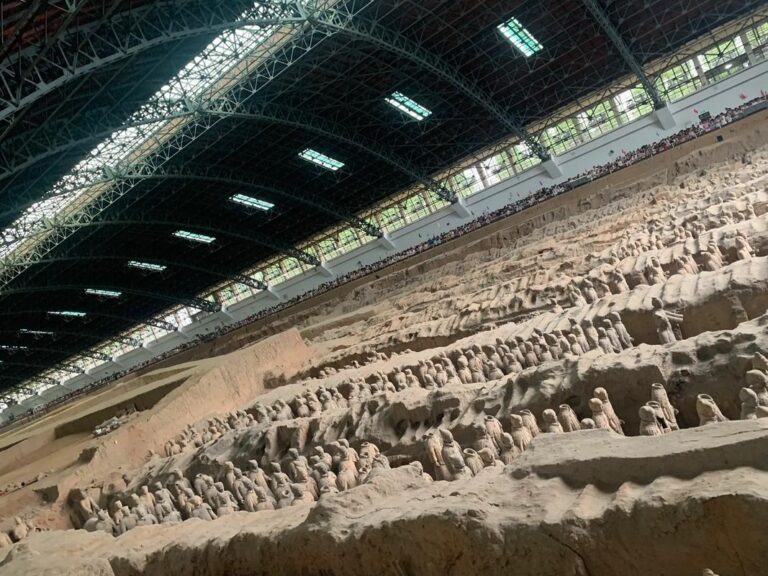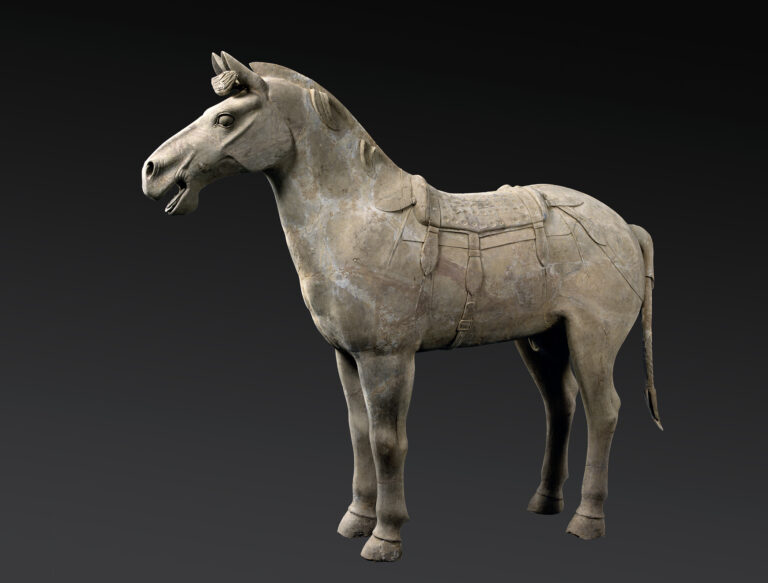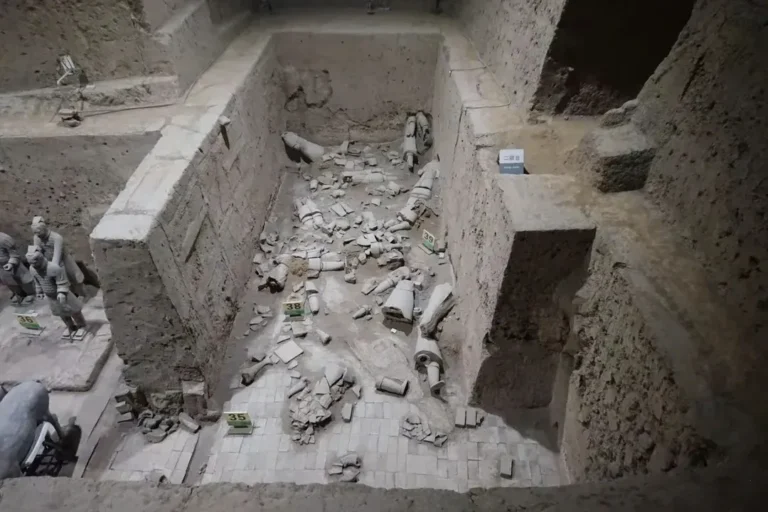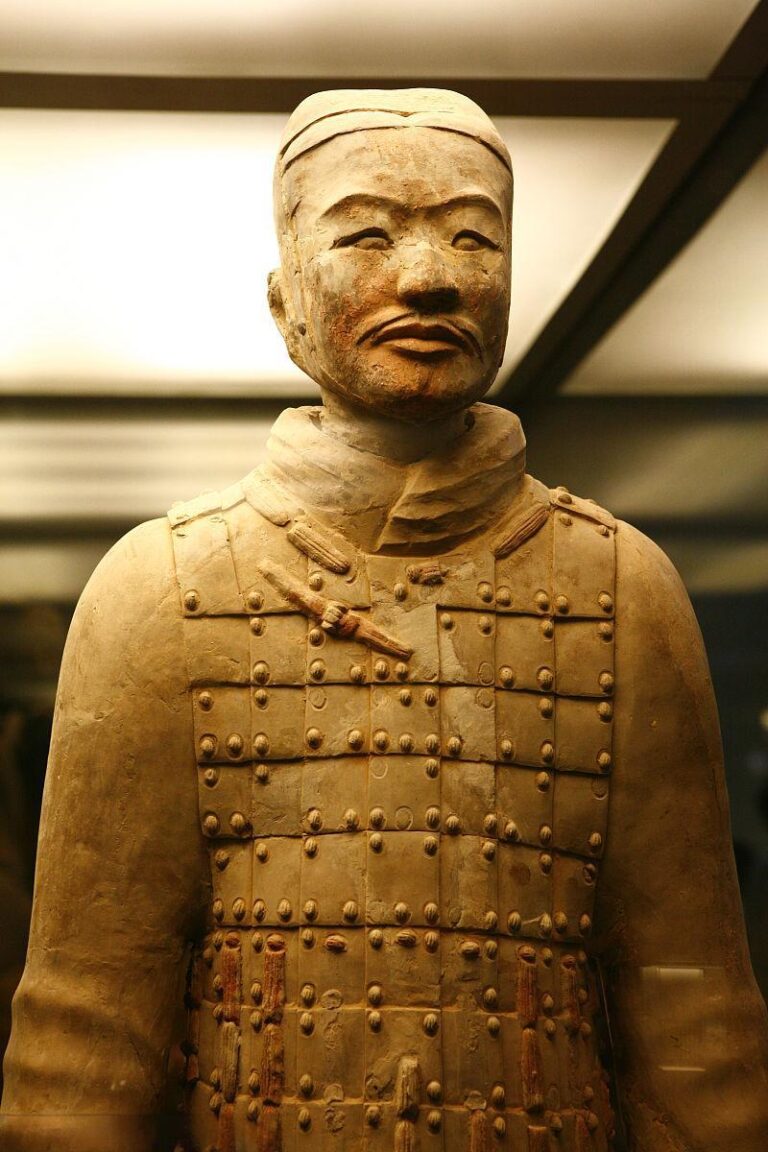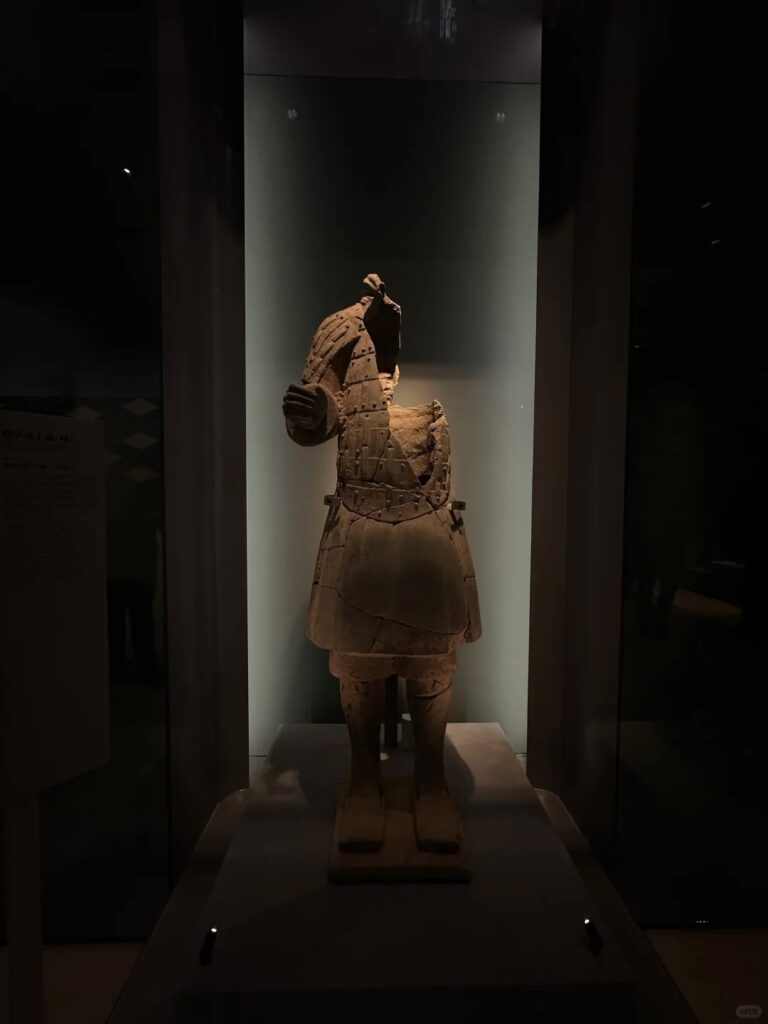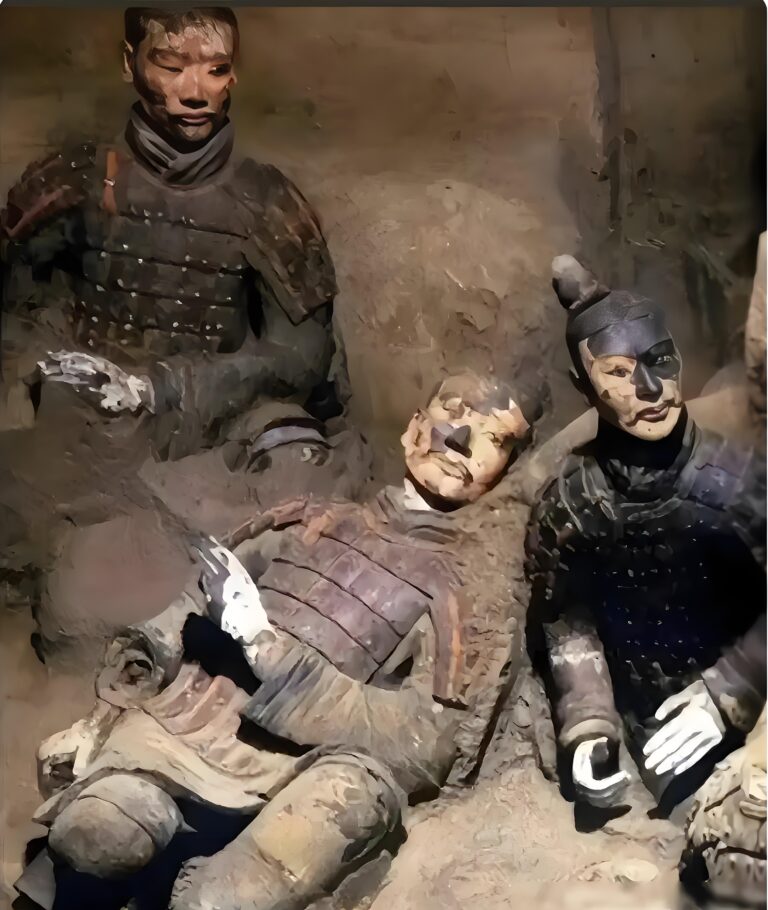Why did the Terracotta Warriors lose their color?
Fading Legion: Unveiling the mystery of the Terracotta Warriors’ color disappearance
First, the first sight of stunning: sleeping thousands of years of rainbow warriors
In 1974, when archaeologists first saw the Terracotta Warriors just unearthed, everyone was stunned – these terracotta warriors are not the earthy yellow color that we see today, but the colorful legions as if they had just stepped out of the paint pots: infantrymen wore purplish-red robes, cavalrymen were equipped with sky-blue armors, the general’s armor shimmered with the light of the gold foil, and even the reins of the warhorses even the reins of warhorses retained their vermilion coloring. The American “Archaeology” magazine described it as a visual miracle of “Botticelli frescoes of the East meets Roman legions”.

But the marvel lasted only 15 minutes. As the figurines came into contact with the air, the brilliant colors began to curl and fall off, like ice cream melting in the sun. The archaeologists watched as the violet color of the 2,200-year-old figurines turned gray and the gold leaf crumbled into powder in the wind. This dramatic scene unveils the most heartbreaking fading puzzle in the history of human heritage protection.
Second, the fatal 15 minutes: the chemical code in the pigments
Terracotta Warriors colorful coat is in fact a “sandwich structure”: the surface of ceramic tires first painted lacquer layer (natural tree resin) as a binder, and then laying mineral pigments. This process would have preserved the colors for thousands of years – until modern man broke the time capsule.
- Dehydration of raw lacquer: At a depth of 2 meters underground, the terracotta figurines are in a constant temperature and humidity environment (90% humidity), and the layer of raw lacquer remains as flexible as fresh glue. When suddenly exposed to dry air (humidity plummeting to 40%), the paint layer quickly shrinks and cracks, peeling off with the pigment.
- Pigment oxidation: Mineral pigments such as cinnabar (red), malachite (green) and bone white (white) used in the Qin Dynasty immediately reacted chemically when they encountered oxygen. For example, copper barium silicate in purple pigment, “Chinese purple” which is only reproduced in modern laboratories, will turn into grayish-brown when it is unearthed.
- Microbial Attack: The dormant flora in the sealed environment during burial will multiply wildly after encountering air and light. German laboratories have detected more than 500,000 microorganisms per square centimeter of faded pottery nibbling at the pigment.
This is like a rainbow frozen in ice suddenly thrown into the oven – the color is simply too late to salvage.
III. Humidity Shock: Two Thousand Years of Stability vs. Fifteen Minutes of Collapse
The environment of the underground world is sophisticated beyond belief:
Temperature: always stabilized at 13°C (equivalent to a constant temperature wine cellar)
Humidity: consistently above 90% (similar to a tropical rainforest)
Air pressure: soil pressure equivalent to 2 kg per square centimeter.
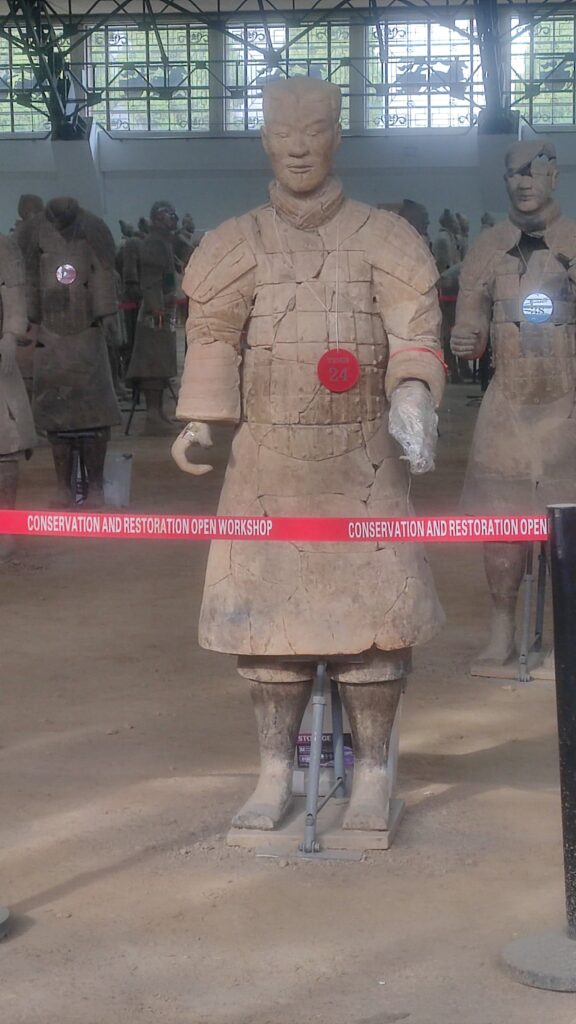
This environment makes the Terracotta Warriors as if they were sealed in a natural preservation cabinet. But archaeological excavations are like suddenly opening the refrigerator door:
- Humidity plummeted from 90% to 30% in 20 minutes (drier than the Las Vegas desert).
- Temperature fluctuations triggered a contraction of 0.3 millimeters per hour (equivalent to a daily cycle of seasons).
- Light intensity is 5,000 times that of the underground environment (like shining a searchlight on a painting).
Material scientists at Harvard University have experimented: moving a replica of a colored figurine from 95% humidity to 40% humidity caused spiderweb-like cracks in the lacquer layer within 7 minutes. This explains why the early excavation of terracotta figurines almost “second fading”, and in recent years the use of on-site spraying PEG moisturizing technology terracotta figurines can retain more than 60% of the color.
Fourth, salvage mistakes: the 20th century conservation dilemma
1970s archaeological team has actually realized the color protection problem, but limited by the technology at that time:
Plastic film disaster: in order to moisturize the terracotta figurines wrapped in polyethylene film, the result is that condensation breeding mold, but accelerated the fading of colors
Plaster fixation: the use of orthopedic plaster to fix broken pieces of pottery, but blocked the breathing pores of the pottery tires, resulting in an imbalance of internal humidity
Lighting damage: early pavilions use ultraviolet lamps, 10 hours of exposure is equivalent to 3 years of exposure to the sun in the natural environment
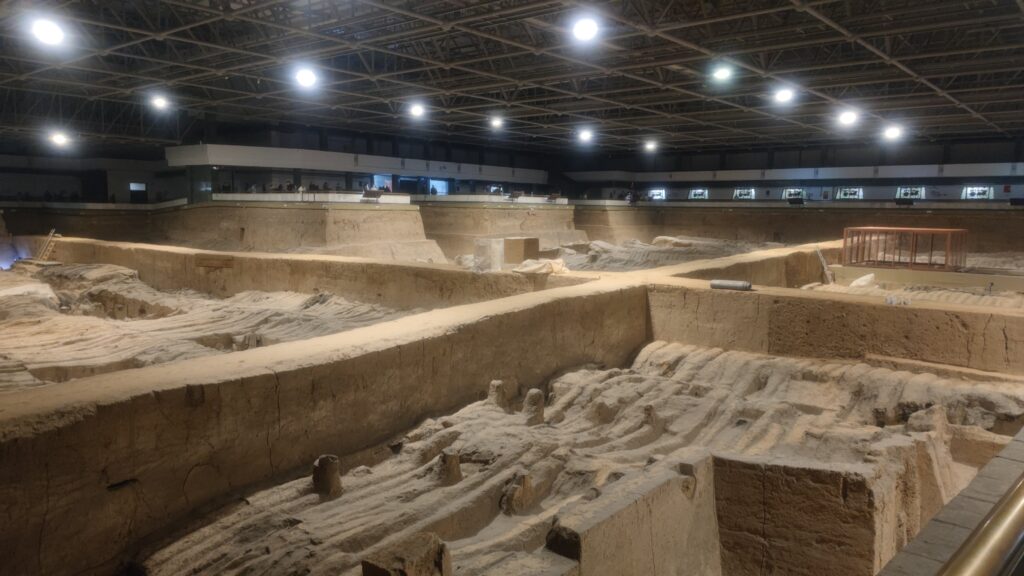
The most heartbreaking case occurred in 1986: the “painted general figurines” unearthed in Pit 3 had retained their armor decoration intact, but due to a temporary power outage that caused the constant humidity system to be interrupted for 8 hours, only 38% of the original colors were eventually salvaged. These lessons prompted UNESCO to formulate the “Handbook for Emergency Protection of Archaeological Sites” in the 1990s, many of the provisions of which were directly derived from the Terracotta Warriors’ bloody experience.
V. Rebirth of Color: When Technology Talks to Ancient Wisdom
Today in the Terracotta Warriors Laboratory, you will see science fiction movie-like scenes:
- molecular preservation **: spray polyethylene glycol (PEG) to form a transparent protective film, the principle is similar to the artifacts coated with “moisturizing cream”.
- Freezing to reveal: liquid nitrogen instantly freezes the fragile painted layer, and then a nano-scalpel is used to completely peel off (as if giving the frescoes an organ transplant)
- Digital Resurrection: through multi-spectral scanning to restore the original color, and then AR technology allows tourists to scan the gray pottery figurines to see the virtual restoration effect.
In 2018, a Sino-German team cracked the molecular structure of “Chinese violet”, and found that its manufacture requires precise control of the furnace temperature at 950 ℃ and continuous heating for 36 hours – this technology actually appeared in the 3rd century BC! Modern chemists have to admit: we thought we were rescuing ancient colors, but in fact we were learning materials science from Qin Dynasty craftsmen.
Conclusion
The story of the fading colors of the Terracotta Warriors is essentially a microcosm of mankind’s race against time. Those disappearing colors are like fleeting rainbows, reminding us that true civilization inheritance requires not only the courage to discover history, but also the wisdom to guard it. The next time you see grey and yellow ceramic figurines, please imagine what kind of gorgeous robes they once wore – that was the colorful declaration of an ancient civilization to eternity 2200 years ago.

